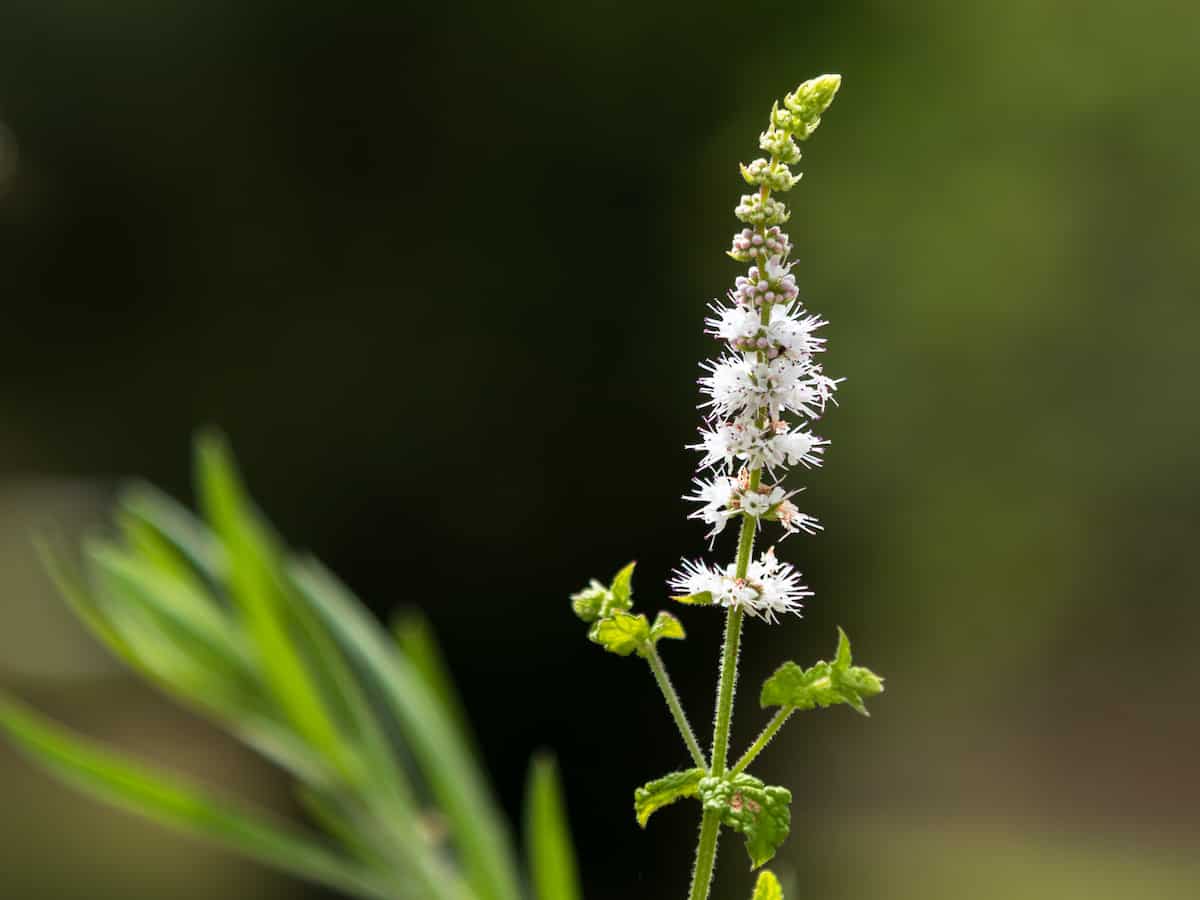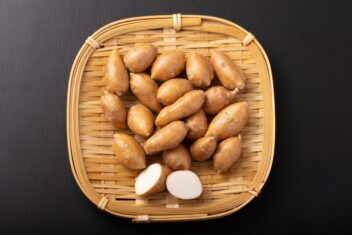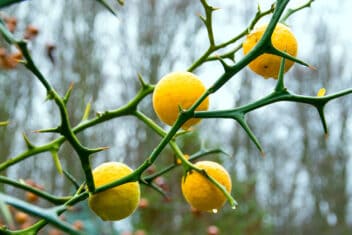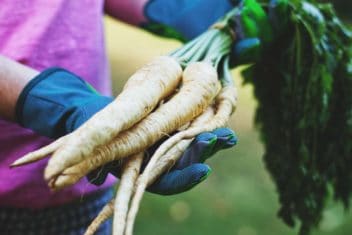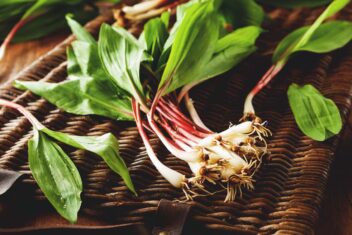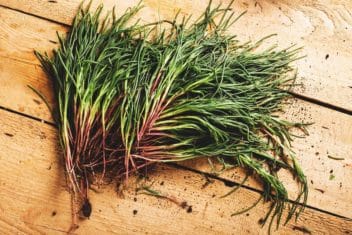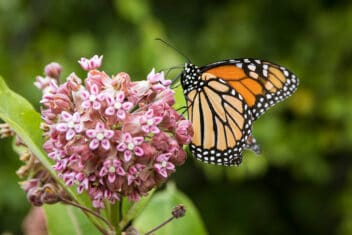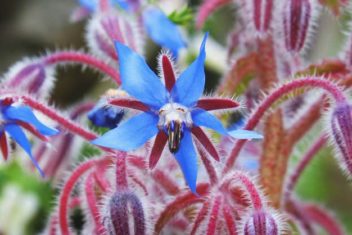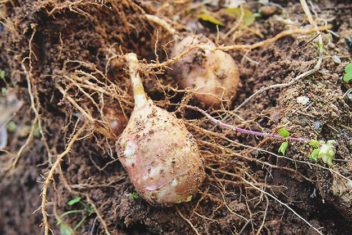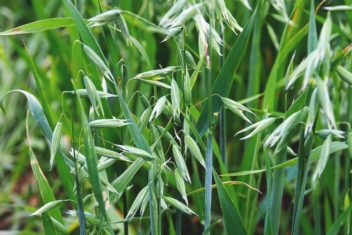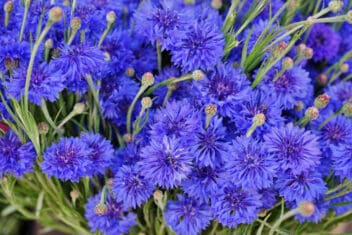Whether you’re looking to make some extra cash growing and selling black cohosh root, or you just want a pretty display for a shaded, moist part of your garden, you can’t go wrong with this pretty plant.
Black cohosh is valued as a medicinal plant, and studies have shown it has promise as a treatment for pre-menopausal and menopausal symptoms.
It can grow extremely tall and blooms with lovely white flowers. It takes a while to get going, but this is a long-lived plant and well worth the effort.
What is Black Cohosh?
Black cohosh, Actaea racemosa and Cimicifuga racemosa is also known as snakeroot, black bugbane, and rattleweed. It’s native to the Eastern United States and a member of the same family as buttercups.
The plant can get up to eight feet tall with whispy plumes of white flowers that attract pollinators.
Black cohosh has a rich history as a medicinal plant. It was used by Native Americans for a variety of ailments. They introduced the plant to European colonists, who began to use it as well.
Today, you may know black cohosh as a medicinal ingredient for helping women with premenopausal and menopausal symptoms. Some people also use it to help with sleep disturbances, nervousness, irritability, vertigo, night sweats, and many other issues.
The science is still out on whether it’s effective medicinally, but many people swear by it. Just keep in mind that you should use caution when consuming any supplement.

Varieties of Black Cohosh
Black cohosh is a native plant, growing in dense forests and woodlands. You can buy seeds from a lot of specialty seed merchants, however, you will always get C. racemosa. There are some Asian varieties with different names, but they don’t have the same medicinal properties.
There are some naturally occurring variants, but they are rare and not as reliable as the seed you purchase. Planting is also achieved through rhizomes and this is the best way to get them going in your garden.
How to Grow Black Cohosh
Black cohosh is hardy in all temperate climates as long as you get the soil and water right. It grows in zones 4 to 9.
Black cohosh grows in dense woodland under canopies. It prefers shade with only dappled sunlight. If it gets too much sun, the foliage will be a pale green and the growth will likely be stunted. Try to mimic its natural environment.
Aim for a pH of 5 to 6. Ensure the soil is well-draining but can remain moist. Dig in a lot of well-rotted organic matter to mimic the forest floor. If you live in an area with clay or compacted soil, use raised garden beds with lots of manure and well-rotted organic matter.
Black cohosh can handle some wet roots, which makes it suitable for planting on the margins of waterways.
Black cohosh doesn’t do well in containers due to its large in the roots. You can, however, plant in a woodland environment in deep raised garden beds full of well-rotted organic matter.
Planting Seed
Plant seeds indoors, in a greenhouse, or outside in the garden in fall. Seeds may germinate in the first or second spring, depending on the temperature.
Planting black cohosh seeds is an inefficient way to get started, but it’s totally possible. Seeds must be stratified or put through a cold-warm-cold cycle before they’ll germinate. Be aware, seeds may take up to two years to emerge.
If you buy the seeds, it’s best to stratify them indoors so you can control the process. Starting 4 months before you plan to put them in the ground, expose seeds to 70°F for two weeks, then 40°F for three months. I put my seeds in the closet with the hot water heater and then in the fridge.
If you take seeds directly off a black cohosh plant in the fall, plant them straight away. Nature will take care of the stratifying and the seeds will go through the temperature cycle required for germination. It may be two springs away.
Plant the seeds in the garden or indoors 1/4 of an inch deep and 2 inches apart. Cover with a two-inch layer of leaf mulch and water well, keeping the soil moist until germination.
For seedlings planted indoors, in the spring, when the second set of leaves appears, it’s time to transplant them outdoors. Harden plants off for one week.
Planting Rhizomes
Plant rhizomes in spring or fall. If you can’t find someone to get rhizomes off locally, they can be bought from seed merchants.
This is the best way to plant your black cohosh. Cut rhizomes into sections about four inches long, Each section should have a bud. Leave any fibrous roots on as well.
Plant the rhizomes 4 to 6 inches deep. The bud should be pointing up. Cover with at least 2 inches of soil and three to five inches of leaf mulch. Water well and keep moist. Replace leaf mulch as it sinks down.
Spacing
Black cohosh will spread over time and within years, you will have an ever-expanding patch. When planting a number of rhizomes, I find it best to dig a bed five feet wide and six inches deep. The rhizomes can be planted 20 inches apart.
Caring for Black Cohosh
Once you get your black cohosh growing, it’s time to focus on giving it water and nutrients.
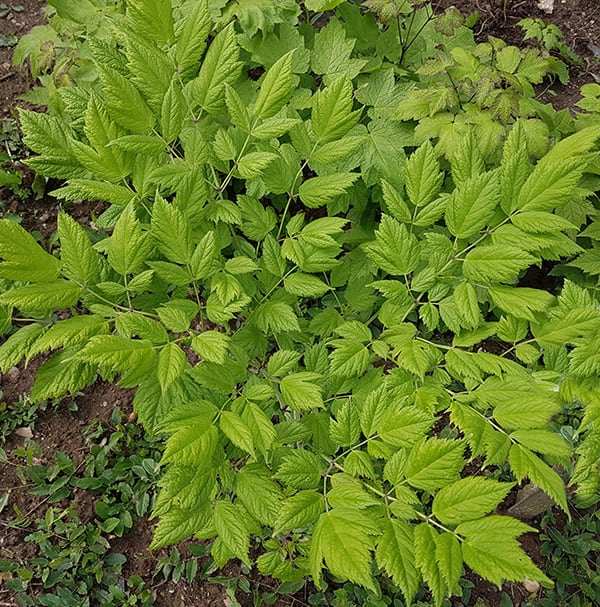
Fertilizer
Since black cohosh grows happily in wooded areas with plenty of organic matter, you’ll need to recreate these conditions in your garden. Work in lots of well-rotted compost when you plant and then side dress it with compost throughout the year.
Keep the plants mulched with leaves and replace them as needed. If the plant appears stunted, apply a slow-release fertilizer in spring.
Water
This is a plant with high moisture needs. Growing in shaded, wooded areas, black cohosh enjoys a wet environment. It prefers plenty of water in free-draining soil.
Water well and keep the soil moist, but not soaked.
Pruning and Staking
Prune back in the spring. This will make the floral display more striking. The white flowers are often the last blooms left in the fall and winter.
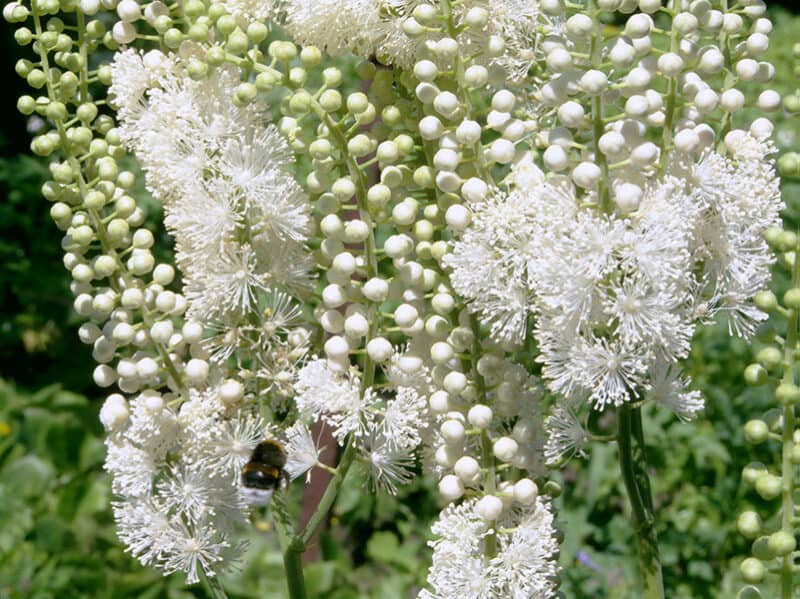
Tall flowers may require staking, particularly if they’re in windy areas.
Companion Planting for Growing Black Cohosh
Plant this amazing plant with other medicinal woodland wonders like:
- American ginseng
- Wild ginger
- Golden seal
- Solomon’s seal
Common Problems and Solutions for Growing Black Cohosh
While black cohosh is relatively healthy, it does have occasional challenges from a few pests and diseases.
Cutworms
Cutworms are the caterpillar of night-flying moths. They can cause havoc in the garden. They eat the stems at ground level and come out at night. We have a guide dedicated to helping you beat back this pest.
Blister Beetles
Blister beetles eat leaves, flowers, pollen, and other insects. Occasionally they will secrete fluid onto your skin, causing minor blistering that clears up after a few days.
Encourage birds into your wooded area as they will pick the beetles off the plant for you. Use organic pyrethrum for a quick knock-down.
Damping Off
This will affect black cohosh when it’s young. The plant rots at the stem and roots below the surface from a fungal pathogen. Avoid overwatering, which is easy trying to keep black cohosh moist. Our guide will explain how to handle this common issue.
Leaf Spot
Spots form on the leaves, often with light centers and dark edges. This fungus is usually a result of too much moisture and not enough airflow. Try a baking soda and water mix. Add 1/2 a teaspoon of baking soda into a gallon of water and spray liberally.
If that doesn’t work use a sulphur or copper based fungicide.
Harvesting Black Cohosh
Harvest in the fall because that’s when the roots are at their peak. Pull up the entire rhizome and root system. If you reserve any of the rhizomes for planting again, do so straight away. You can also store them in burlap sacks at about 40°F. Ensure they have plenty of air circulation and don’t rot.
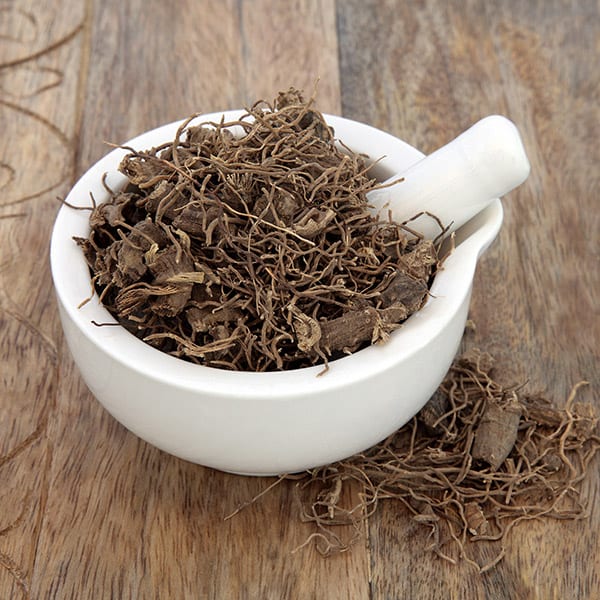
Black cohosh is normally dried or dehydrated and stored until needed. There is a good market for black cohosh roots, so you’ll likely be able to sell your harvest if you choose.
Rhizomes will take between four and six years to develop big enough to harvest using the seed method.
You should be able to harvest plants started by rhizomes in about three years.
Before you harvest wild black cohosh, check it’s legal in your area. Many places have made it illegal due to over-harvesting and selling.
